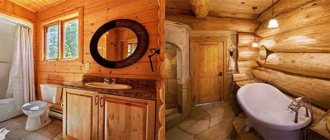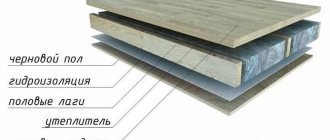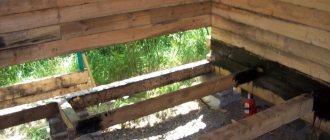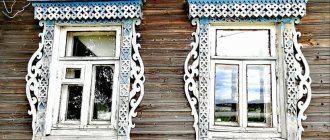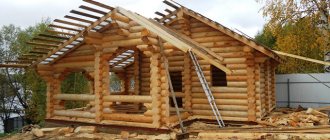Description of the insect
Four types of beetles live in heated rooms: furniture beetles, house beetles, grain beetles, barbel beetles, and, less commonly, bark beetles.
Characteristic features of grinder beetles:
- an elongated body (from 3 to 10 mm) of a cylindrical shape with a relatively small head; hard wings, covered with a hard chitinous shell with hairs; three pairs of five-segmented legs; antennae of different lengths; color in brownish tones with reddish, greenish-yellow shades.
Adult beetles crawl out of their nests only during the breeding season.
The main function of an adult beetle is mating and laying eggs by females. They do not live long, from one to three weeks. One female lays from 40 to 200 eggs per clutch, depending on the species. The main damage to wood is caused by larvae. From the first minute of their appearance, they begin to actively eat the tree. It takes from one to three years before pupation. During the day, the larva makes passages up to 3 mm in the tree.
Nutrition
The larvae of beetles mainly feed on cellulose in wood and paper. One of the types, bread, is found in food products: dry bread, cereals, dried fruits, pasta. Some species prefer dry wood, others wet. The population of wood grinder beetles causes significant damage to structures and wood products, literally eating it away from the inside, turning it into dust.
Life cycle and reproduction
The danger of grinder beetles is that they have a long biological life cycle, up to three years. The adult individual (imago) of the beetle grinder can be seen only in the warm season in May-June, when it gets out of the nest and mates. Caterpillars inside wood can live from three years to 15–17 years. Periodically, if the temperature fluctuates downwards, it goes into suspended animation.
Cycle:
- Eggs. The female beetle grinder lays eggs in cracks, crevices, and in nests that the female makes. They are whitish or transparent in appearance, 1–1.5 mm long. The clutch of eggs contains symbiotic microorganisms, they help the larvae digest cellulose. Larvae. They begin to appear at about 7–12 days. The shape resembles a semi-rolled white worm (3–4 mm). Most have several pairs of short, prehensile legs that help them move along the aisles. Pupa of a beetle grinder. An adult individual is formed from it in 2–3 years. Before transformation, the larva stops eating for several days. The pupa has enough accumulated nutrients.
The optimal temperature for reproduction is +28 – +30°C. If a similar temperature regime is maintained in the house, then certain types of grinder beetles can crawl out and reproduce all year round.
This is interesting. Getting rid of woodworm is difficult. All individuals of the biological chain spend most of their time inside the structures of a log house or hut.
Borer beetles can also be detected by the characteristic sound inside a wooden structure. Before mating, the male lightly hits his head against the walls of the passage. This is a conditioned signal for the female, reminiscent of the ticking of a clock mechanism.
Folk and chemical remedies
You can get rid of the bread grinder using folk remedies. They are not only effective, but also safe, since their compositions will not harm the health of people and pets, which cannot be said about chemicals.
- Pyrethrum powder. It is sold in pharmacies and mixed with water. You should wipe the cabinets with this solution once a week until the insects are completely gone.
- Borax. Used to control many pests, including borer beetles. You need to make special balls from it, mixing it with powdered sugar and chopped millet. These balls should be placed in the corners of the kitchen furniture.
- Borax and yeast. Another effective way to combat beetles is to use borax mixed with yeast and sugar. The ground components must be scattered on paper and placed in the places where insects were found.
Chemicals are usually not used to control this pest for many reasons. Firstly, since the habitat is mainly food, after treatment with toxic compounds, they will no longer be suitable for food. Secondly, if you spray a cabinet with food in tightly closed packages, the effect of the product will not be visible, since it does not penetrate inside the bags and boxes. Thirdly, the use of chemical compounds is unsafe for the person who sprays them.
The only place where the use of chemicals will be effective is on bookshelves. If beetles have attacked a collection of books, then the cabinet or rack can be treated by thoroughly spraying or wiping each shelf. Heavily affected books will have to be disposed of, as the product cannot penetrate deeply. You can save a book by heating it for a day and a half at a temperature of +55 degrees or leaving it in the cold of -15 degrees for 24 hours.
Varieties of wood-boring beetles and harmfulness
The species of grinder beetles, while fundamentally similar, differ in their preferences in food, its types, and living conditions. They also have characteristic external signs.
Longhorn beetle
Their favorite habitat is the trunks of fallen trees, mostly coniferous. Distinctive features of the imago: body length up to 3.5 cm, long whiskers up to 7 cm. Black color with a greenish tint, with whitish down on the tips of the wings. The female lays only one to three eggs, but the larva lives, develops, and sharpens wood for 3 years.
Grinder beetle
Borer beetles are shy insects. At the first sign of danger, it freezes and imitates a dead insect. For this property they are called “pretenders”. The chitinous hood and elytra are brown-red in color, body length is up to 5 mm. Borer beetles mate in late spring and early summer and can fly far from the nest.
One female makes several clutches, the number of eggs is 100–130. The larvae are 2–3 mm, voracious, destroy the tree from the inside, and make long passages in it. They sharpen wooden furniture, books, structures, and dry food. A colony of borers can cause significant damage.
Bark beetle
The name of the beetle indicates that it settles under the bark of a tree. Body length up to 5–8 mm, head elongated, almost merging with the body. Females make several clutches of 70–80 eggs per year.
If a hut or bathhouse is built of logs and there is a bark beetle infested there, then a year is enough for the structure to become unusable. When the first signs of the appearance of borer beetles are detected, it is necessary to urgently take measures to combat it. The bark must be removed from wood before it can be used as a building material.
Furniture sharpener
Chashel are small brownish bugs, 3–9 mm. The female lays up to three hundred eggs. As soon as the larva is born, it makes a small hole and goes deep into the thickness of the wood. It does not drill through holes, so at first you may not notice the appearance of grinder beetles.
The voracious caterpillars live in favorable conditions for years before turning into chrysalises. The tunnels that the shawl gnaws are filled with wood dust. They destroy any wooden structure, from wooden beams to furniture. There are two types: house and furniture.
Bread grinder
Small grinder beetles, with a body length of up to 4 mm, brownish in color. Found in all dry foods, herbs, tea, tobacco. They eat food and bugs. They are fertile, the female lays 120–140 eggs. Larvae (4–5 mm) can live for several days, and in favorable conditions for several years. The cocoon for the pupa is made from small particles of products. Small bugs fly out during the mating period; you can see them on the kitchen windowsill. If small holes appear on grocery bags, they should be thrown away along with the person possessed.
Types of wood-boring beetles
There are several varieties of insects that can be classified as wood-boring beetles. Let's take a closer look at what these pests are:
- The brown beetle, also called the black beetle or the woodcutter, is an insect that most often attacks coniferous trees. The brown barbel loves dryness and warmth, so its females begin to actively reproduce in the summer, laying larvae under the bark of coniferous trees. It is worth noting that it is almost impossible to find these beetles in living trees, since they do not tolerate moisture. But if you have prepared boards or have any items on your farm made from conifers, this parasite can harm them. It is not difficult to recognize these insects; in the course of their life, they leave winding passages in the wood. Affected objects may be covered with a white powdery coating. The brownie bark most likes coniferous bark, so when harvesting wood, you should carefully remove even small fragments of bark from the trunks.
- The false bark beetle, also called the hooded beetle, is another type of wood-boring beetle. These insects often live in latitudes with warm climates, and they can infect almost any wood, easily coping with even durable oak boards. As a rule, false bark beetles gnaw passages along the fibers of the material, making the wood fragile. Such pests can most often be found on support poles, fences, and wells.
- Weevil beetles are dangerous because they attack not only dead wood, but also living trees. Such insects prefer a moist environment, so traces of their destruction can be observed among firewood lying in damp firewood or directly in the open air. To avoid damage to the walls of wooden houses, bathhouses or sheds, try to store firewood as far as possible from such buildings. Fruit trees should also be protected from the weevil beetle, otherwise you may lose both young seedlings and adult plants.
- The borer beetle earns its name due to the characteristic marks it leaves in wood. The diameter of its strokes is quite significant and is approximately 1-2 mm. An interesting fact is that the food for such a pest is not the wood itself, but the mycelium that grows in the canals it makes. The favorite species of the parasite are oak and walnut. Fortunately, these trees are not used as the main building material in the construction of log houses, but the first crown of buildings, as a rule, is made from oak trunks. Among other things, the borer beetle often infects coniferous trees, and especially their bark. If conifers grow on the site, they must be periodically treated with the necessary insecticides.
- One of the most common types of pests is the grinder beetle. You can meet this wood-boring beetle both at home, for example, in wooden furniture, and in the walls of street buildings. This parasite even eats the wood of living plants, making it a dangerous garden pest. Female borer beetles lay eggs in dead or dying wood; the insect loves high humidity and actively breeds in the northern walls of log houses. It is almost impossible to notice affected boards or trunks, since the beetles eat away their central part, leaving the outer shell intact. Experts can determine the presence of borer in wood using electronic stethoscopes. The device picks up sound signals that males give to females in order to attract their attention for procreation.
Causes and signs of pest appearance
The main reason for its appearance is the use of low-quality wood that has not been treated with impregnations against borer beetles. Over time, the protective layer loses its properties. During the mating period, beetles fly to other wooden structures and make new clutches. It is necessary to periodically inspect surfaces and protect wood from woodworms. Impregnate periodically with a new layer of insecticides.
Signs of the appearance of grinder beetles:
- small holes on the surface of wooden structures, furniture; the appearance of wooden pollen, similar in color to mustard powder; rustling, tapping inside the solid wood in the evening, at night; a characteristic odor from insect secretions, insect pheromones; if you remove the outer layer, you can see grooves , larval passages.
You need to start exterminating beetles immediately, as soon as the first signs appear.
Tap the wood, the sound is different. In a healthy tree it is dull, in a damaged tree it is louder, due to the presence of voids. Pollen will begin to fall out of small tree holes.
How to spot borer beetles
If the walls of a wooden house are not plastered and treated with special protective mixtures, then very soon they may suffer from pest beetles. You can understand that wood or objects made from it are being sharpened by a wood grinder using the following signs:
- The presence of winding paths on the surface of the wood and yellowish dust, reminiscent of flour or dry mustard;
- The release of a brown liquid with a pungent odor from the passages drilled by woodworms;
- The bark of a tree affected by insects is easily separated;
- The presence of caterpillars under a wooden structure or plant, crawling onto another object;
- In the house where the beetle has settled, sounds similar to the ticking of a clock are heard at night.
If the borer beetle in the house has engulfed certain wooden objects, you should begin to fight it immediately, since the pests multiply quite quickly. Otherwise, the woodworm larvae will cause colossal damage to your supplies or real estate, making endless passages in it.
How to destroy parasites with your own hands?
Only comprehensive measures to combat wood borers will help protect wood from destruction by wood borers.
Folk recipes
Apply when the first signs of damage by grinder beetles appear, with a limited affected area.
Methods of pest control:
- Impregnation of a wooden surface with a concentrated solution of salt. Mixtures with kerosene. Add 3 portions of turpentine to kerosene (distillation of resin secretions from coniferous trees), mix thoroughly. Lubricate the surface in areas with signs of damage. The procedure is repeated several times. Use protective equipment. The mixture is flammable, with a characteristic odor. The second method is to add kerosene to linseed motor oil (the proportion is 3 parts oil, one part kerosene), saturate a wooden surface with the mixture. Vaseline and wax. Vaseline oil is poured into the holes in the wood using a syringe, and they are sealed with wax. Disinfectant, black carbolic acid, naphthalene, and molten resin are taken in equal proportions, mixed, and applied to wooden structures. The method is more suitable for processing construction beams and boards.
Treatment with folk remedies is repeated periodically. If these methods do not give a positive result, they move on to radical methods of combating borer beetles.
Insecticides
Before you fight wood-boring beetles with insecticides, you need to protect your hands, respiratory tract, and eyes.
Conventional products, such as Dichlorvos, are ineffective in combating beetles; the aerosol ends up on the surface. Penetrates into wood in limited quantities.
Preparations:
- "Anti-bug." A complex action product that destroys not only grinder beetles, but also mold and mildew. Does not change the color of wood, therefore it is suitable for processing structural elements of furniture and lumber. Apply to the surface 2 times, with breaks until completely dry. Advantages: affordable price, low toxicity. If wood holes are found on the surface, pour the drug into them with a syringe.
- "Empire 20". A broad-spectrum insecticide in the form of microcapsules, which extends the period of influence on parasites to six months. Low toxicity, leaves no traces. Destroys primarily adult individuals, interrupting the reproduction cycle. The best time for processing is May-June, the mating period of grinder beetles. Spray and wet the contaminated surface.
- "Treetox." A drug for year-round use. Prolonged exposure (up to six months). The tree is treated 3 times, with an interval of 21 days. Lubricate wooden surfaces, insert a syringe into the holes made by the beetles, and seal them with wax.
- "Lingofix I-pro." A new generation of means to combat borers affects the reproduction of insects and affects their growth. Can be processed at any time of the year. It is recommended to disinfect wooden exterior parts after 10 years. One portion of Lingofix I-Pro is diluted in three parts of water before use. After processing and complete drying of the preparation, the surface can be opened with stain, varnish, or paint. In conditions of severe damage to wood, it is injected into holes on the surface. Or drill diagonal holes with a thin drill and pour the diluted drug into it.
- "Belinka belocid." A combined product made from a mixture of alkyd resins and biocides. It is toxic, so spraying is not recommended. Does not change the color of wooden coverings. Used as a prophylactic to protect against the borer beetle. In order to sanitize the affected areas, treat the surface several times and inject it into the wood holes with a syringe. Allow the wood to dry for a week, then repeat the treatment.
Application of dry steam
In a bathhouse or sauna, dry steam is obtained by heating the heater stove to 600–700°C. If you pour water on a hot stove, dry steam is formed. Heating a room with dry steam to a temperature of 85–90°C leads to the death of pests.
Fumigation
Method of fumigating a room with PH3 (hydrogen phosphide). For these purposes, special equipment is required, so it is right to entrust the processing to professionals. The gas is toxic, protective equipment is required. Fumigation is a highly effective remedy that penetrates into all cracks and holes, destroying the entire population of grinder beetles. Treatment lasts 24 hours, ventilation – 2 days.
The second method is fumigation using sulfur bombs (“Pawn-B”). It is better to poison the beetle grinder during the breeding season in May–June.
Microwave
A professional way to exterminate bark beetles. Using a microwave generator, the damaged surface is treated. At temperatures above 60°C, the entire population of grinder beetles dies. The advantage is targeted impact, high efficiency.
Douching
The douching method is based on the introduction of insecticides into the holes made by grinder beetles. In case of deep damage, additional holes are made with a thin drill. After processing, they are sealed with wax.
Heat treatment
The best remedy for woodworms in a wooden house is to freeze it to at least –3°C. The beetle and larvae die at sub-zero temperatures. A good way to control pests in a bathhouse.
Heat the structural elements with a construction hairdryer to a temperature of +45°С ... – 50°С. The larvae and eggs of the borer beetle die.
How to get rid of woodworm from wooden houses
Like most parasites, you can fight woodworms on your own, you can entrust the matter to specialists, or you can try to prevent these dangerous insects from appearing on your territory. The main thing is not to panic at the sight of nimble beetles, but to develop a fight plan and act according to it.
Prevention of woodworm occurrence
Getting rid of beetles is quite difficult, but preventing them from appearing in your home is quite possible. This will require care and simple, but regular measures.
- Check all wood purchased for construction for the presence of larvae and burrows. If income allows, give preference to materials that have undergone heat treatment or industrial impregnation in an autoclave. This almost doubles the cost of materials, but guarantees the absence of beetles in the foreseeable future.
- Once every 1-2 years, treat the wood with special antiseptics (Belinka, Antishashelin, Lignofix, etc.). Do this twice with an interval of 2-3 days, and only on uninfected wood.
- Wipe wooden doors, window frames and natural wood furniture with a mixture of turpentine and melted paraffin and creolin (ratio 10:5:3).
- Ventilate your home regularly.
- Keep things organized and store grains and spices in jars.
- If possible, burn or throw away furniture affected by woodworm.
- Regularly (at least once every 1-2 months) inspect the walls, floors, and ceilings for traces of woodworms.
Do-it-yourself woodworm control
It is clear that over centuries of wooden house construction, people have developed their own methods of fighting woodworms. All of them are very troublesome and have some effectiveness only at the initial stage of the spread of beetles throughout the house. If for some reason you are not ready to call a specialist, then use one of these sharpener products.
- mix turpentine and kerosene in a 3:1 ratio and pour it into the holes found with a syringe;
- mix 100 g of gasoline and 10 g of naphthalene, and then apply to the affected wood with a brush;
- if the weather permits, turn off the heating and leave the house to freeze for several days;
- Dilute 250 g of sodium fluoride in a bucket of water and apply to the surface of the wood with a brush or brush.
Unfortunately, none of these means guarantees 100% disappearance of beetles, if only because some of them settle in beams, ceilings, supports and other places hidden from view.
Prevention of woodworm occurrence
Preventive measures against the borer beetle are an essential element of protection. These include:
- cleaning the tree from bark; visual inspection of the material; drying the wood in special chambers in the sun.
Treatment of structures with insecticides (such as “Senezh”, “Pinotex”), special impregnations, stains, opening with varnish is an essential element of wood protection.
Borer beetles are dangerous pests. They spend most of their biological cycle inside a wooden structure, so they are difficult to immediately detect. Despite the insidiousness of the pest, there are many effective means to overcome the pest.
Wood beetle larva
Woodworms go through 4 stages of development from egg to adult.
The fertilized female lays eggs in winding passages inside the wood. After 1-2 weeks, larvae emerge from the eggs. They have a C-shaped white body and a reddish head. Strong jaws easily crush wood, and the digestive system processes wood elements, decomposing them into proteins and amino acids. Unprocessed residues are thrown out in the form of brown pollen. The larvae are a destructive force, after which you have to throw away furniture and reinstall wooden floors.
In the second stage, the insect lasts from 2 to 5 years. During this time, the parasite manages to ruin all the wood in the house. The top layer of boards becomes paper thin, and the inner surface turns into a network of tunnels. Three weeks after pupation, a beetle appears and leaves the home through one of the passages. It is at this stage that residents learn about the presence of pests in the house.
House borer (Anobium pretinax)
It is found almost everywhere in the European part of the Russian Federation, in the Caucasus and Siberia - up to Irkutsk. It is much larger than a furniture sharpener, its length is 4.5-5 millimeters. The color is brown, on the front back at both rear corners there is one golden-yellow spot.
Flight in May-June. The female lays eggs in crevices of exposed wood or in old passages, about 6 eggs separately. The emerging larva is very similar to the furniture grinder larva, but larger. The stroke width is about 3 and the length is about 10 millimeters. Before pupation, the larva approaches the surface of the tree almost at a right angle and leaves only a very thin film ungnawed.
At this point the passage turns into a pupal cradle. It is lined with brown flour mixed with feces, and separated from the rest by a cork of the same content. A young beetle emerges from the pupa and gnaws a flight hole with a diameter of 2.5-3 millimeters. Depending on external conditions, generation lasts from a year to 2-3 years.
The house borer inhabits wood mainly in places where it is exposed to winter frosts. In stone residential buildings - in the attic in the beams (first at the ends of the beams lying in the nests of the external walls, then in those parts of them that are periodically wetted from leaking roofs), in the selection, flooring and rafter legs, in the attic partitions.
The house grinder does not colonize fresh wood, but wood that has lain in buildings for several years. Acceptable humidity for it is from 11 to 18%. Under favorable conditions, its development period lasts a year.
This is the most common and dangerous beetle among house beetles. It has a flat black body 2-3 centimeters long, covered with delicate whitish hairs. The beetles fly in July–August. The female lays up to 50 eggs up to 2 millimeters in size in cracks and crevices of wood. Their shape is elongated, their color is yellowish-white.
It is very important to promptly detect the appearance of destroyers in the house. To do this, it is necessary to carefully examine the wooden parts of structures that do not have access to light, attic spaces, and the most humidified parts of buildings
Insects can be detected by round holes in the wood, from which fine brown flour pours out abundantly.
It is not always possible to determine the type of pest based on the nature of wood damage. Therefore, you definitely need to look for larvae or adult beetles. Certain types of grinders are similar to each other. It is necessary to determine exactly what species the detected pests belong to.
Recommendations for wood use
You must always remember that it is very difficult to fight wood-boring beetles, so it is necessary to take measures in advance to keep wooden structures intact. There are a number of recommendations that can significantly extend the service life of wooden structures. For example:
- At least once a year, inspect wooden structures for the presence of wood-boring beetles and their larvae.
- Build buildings only from dry, treated wood.
- If this is not possible, then wooden structures can be processed independently. For such purposes, it is better to use products with prolonged action.
- All wooden structures should be treated, including window frames, doors, floors, roof frames, etc.
- If infected wooden structures are found during operation, it is better to replace them and burn the old ones.
The wood-boring beetle poses a serious threat to wooden structures. The thing is that he spends the main part of his life in the thickness of the wood, rendering it unusable. In order for wooden structures to last as long as possible, they need to be treated with special compounds, after which their condition must be monitored every year.
Traditional methods of fighting wood beetles
At the initial stage of infection, you can use “grandmother’s” methods of getting rid of parasites. At home, you can get rid of woodworms using:
- Table salt. The contaminated areas of the wooden surface are treated with saline solution. Helps only indoors.
- Vaseline oil. The liquid is drawn into a syringe and poured into the visible insect holes. Then the passages are sealed with wax or paraffin. The effect only appears when treating small surfaces, such as bedside tables or tables.
- Mixtures of turpentine with kerosene (3 to 1). The solution is applied to problem areas with a brush. The method is very dangerous as flammable mixtures are used.
- A solution of kerosene and linseed oil. The wood is processed using a roller or brush.
- Fumigator with fragrant herbs. Mix sage, incense, lavender and resinous branches. The resulting mixture is placed in a fumigator and set on fire. The fragrant smoke penetrates all visible openings from parasites. The method is safe
How to find out about the presence of unpleasant insects?
So, let's figure out how to determine whether there are tree beetles in the house (photos of pests are presented in this material):
The first thing you need to pay attention to is the presence of holes. When insects appear on the furniture, small round holes appear, under which lies “drill flour”. If the larvae have climbed far, the entire entrance will be filled with rot.
In this case, a caked mass, or “wormhole,” appears on the wood surface. The darkened sides of the furniture need special attention: it is in these places that holes left by bugs can most often be found.
To find out how seriously the wood is damaged, just pierce it with a screwdriver. If the wood remains hard, you can get by with special treatment. Antiseptic agents, aerosols or pastes will help preserve the wood. Today, the most popular drugs are Antizhuk, Wood Healer, Basilit and Empire-20. Each of these products is applied in an even, not too thick layer so that it does not run off the surface. You can also use motor linseed oil or kerosene. If the screwdriver easily pierces the wood, then it is unlikely that it will be possible to save the damaged areas. And in the future, try not to forget that the fight against wood beetles is a necessary measure to protect wooden structures.
As a rule, insect pests live in passages that they themselves have carved into the tree. During the breeding season, they begin to fly actively and can crawl out onto window sills.
According to reviews and recommendations of experts in the field of wooden house construction, today the best remedy for wood beetles is products. Neomid Antizhuk is considered the most powerful drug against tree beetles.
